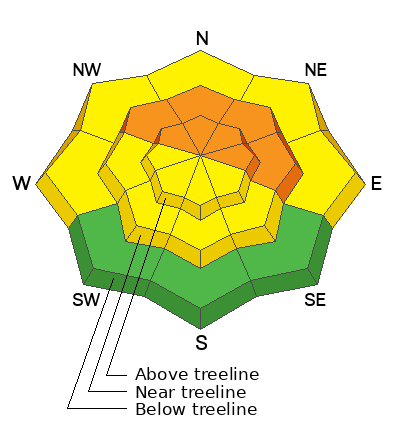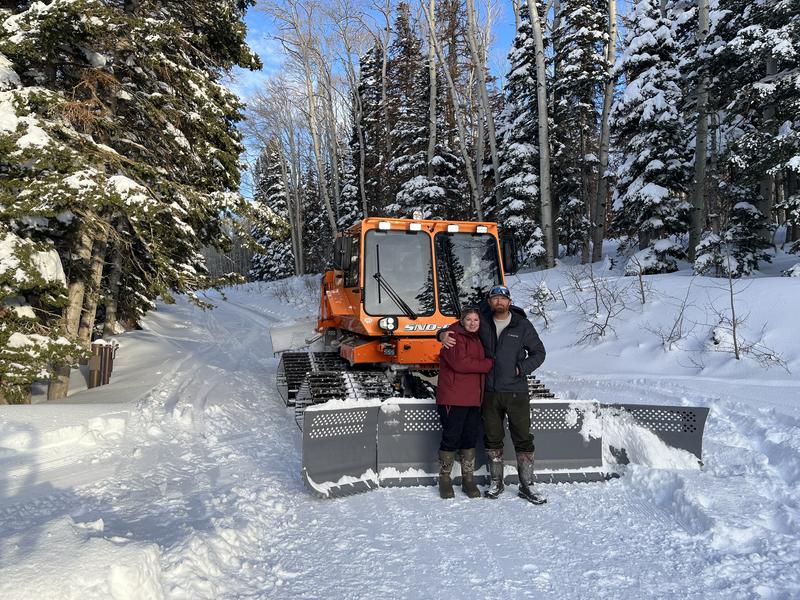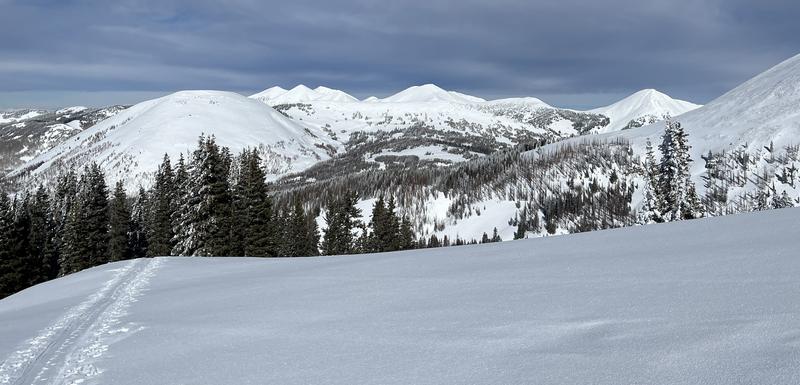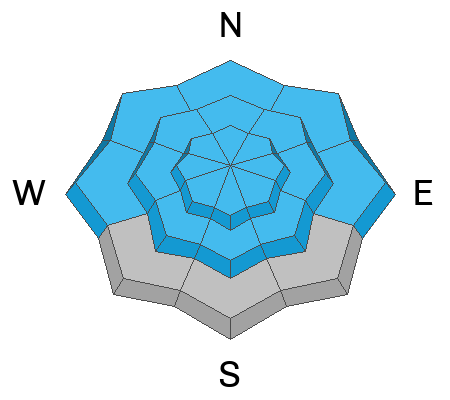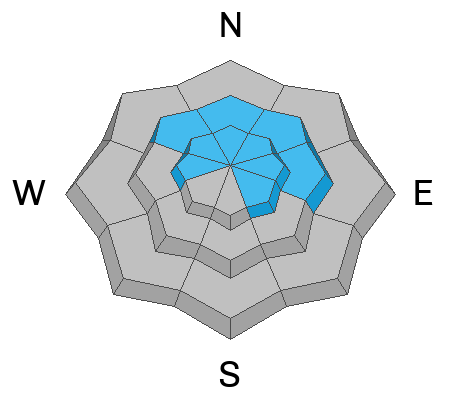24 Hour Snow 0" 72 Hour Snow 0" Season Total Snow 130" Base Depth at Gold Basin 60"
Winds on Pre Laurel Peak S 20-25 G33
Temp 20F
Weather
Southerly winds have been on the increase overnight and high clouds are streaming into the region ahead of a weak, shortwave trough that will track across the northern Rockies. Today look for partly sunny skies, breezy SW winds, and high temps in the mid 20's. The Pacific trough train continues through the week keeping us under a generally unstable pattern with a smallish storm looking to affect our area directly Tuesday night into Wednesday.
General Conditions
The mountains are pasted with snow and coverage is excellent. Good, settled powder conditions are still widely available on shady aspects and in wind sheltered terrain. The sun was fairly strong yesterday and some south facing slopes will be lightly crusted this morning. A poor snow pack structure can still be observed with the November persistent weak layer present on all aspects. It is becoming far less reactive however, showing both signs of strengthening, as well as adjusting to last week's load. Areas of greatest concern continue to be on steep, wind loaded, northerly aspects.
As we trend towards Moderate danger, consider this: most avalanche fatalities occur when the danger is moving up from Moderate to Considerable, or back down from Considerable to Moderate. As we start to think about easing into larger terrain, areas to avoid include slopes with steep convexities or blind break-overs; thin snowpack areas along slope margins or near shallowly buried rock outcrops; and areas of steep, rocky, more radical terrain.
Snowpack and Weather Data
Travis Nauman sent in this report of an avalanche that ran in the
Corkscrew Glades during last week's cycle. This is a great reminder that this steep, wooded area in the
near treeline zone should not be considered safe terrain.


